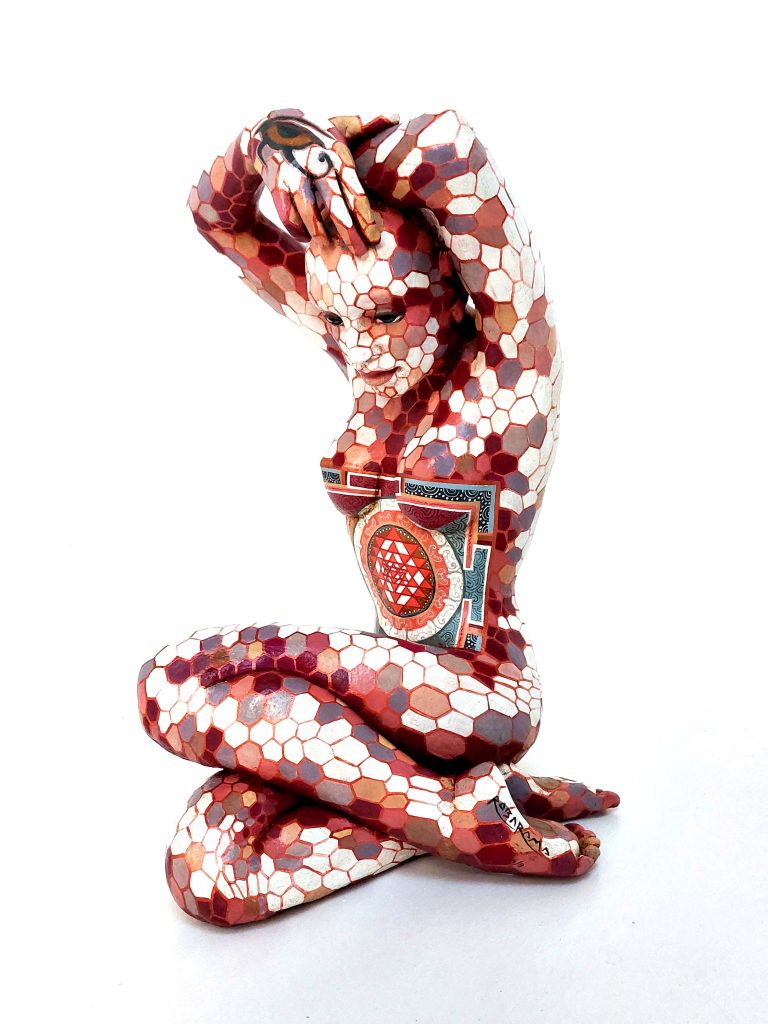
I.F.A.G.


Im-Perfection
Rabarama
+ Follow
Hand-painted bronze
52.5x39x25 CM
20.66x15.35x9.84 IN
This work is part of a limited edition set.
FREE SHIPPING WORLDWIDE
Im-perfection is a work linked to beauty. The title, as you can see, is a play on words linked to "perfection": it is in fact our flaws, and therefore our imperfections, that make us unique and wonderful. The pose of the figure, intent on protecting itself, shows the fragility relative to the imperfect, even if true beauty is found within us.
In this case, the Artist decorated the skin of her creature with symbols related to the 7 Chakras that, connected to each other and open, circulate the energy within our being and then relate with the energy present throughout the created. Another reference to Indian culture is the Mandala design on the back, a geometric figure used in spiritual rituals to involve the energy of the Universe.
This energy is thus freed from our body, allowing our soul to show itself outside in all its beauty.
Other symbols present on the work are the classic honeycombs, which indicate the cells that make up our being and in our DNA; on the legs are the ancient symbols of the Sun and the Earth, which respectively indicate energy and life. Finally, on the back of the hand there is an eye: the position is not casual, the hands are in fact the instrument that uses the Artist to see the world and reproduce it on clay; moreover, following the Egyptian tradition, it refers to the Eye of Horus, associated with invulnerability and leading to omniscience.
Im-perfection is a work linked to beauty. The title, as you can see, is a play on words linked to "perfection": it is in fact our flaws, and therefore our imperfections, that make us unique and wonderful. The pose of the figure, intent on protecting itself, shows the fragility relative to the imperfect, even if true beauty is found within us.
In this case, the Artist decorated the skin of her creature with symbols related to the 7 Chakras that, connected to each other and open, circulate the energy within our being and then relate with the energy present throughout the created. Another reference to Indian culture is the Mandala design on the back, a geometric figure used in spiritual rituals to involve the energy of the Universe.
This energy is thus freed from our body, allowing our soul to show itself outside in all its beauty.
Other symbols present on the work are the classic honeycombs, which indicate the cells that make up our being and in our DNA; on the legs are the ancient symbols of the Sun and the Earth, which respectively indicate energy and life. Finally, on the back of the hand there is an eye: the position is not casual, the hands are in fact the instrument that uses the Artist to see the world and reproduce it on clay; moreover, following the Egyptian tradition, it refers to the Eye of Horus, associated with invulnerability and leading to omniscience.